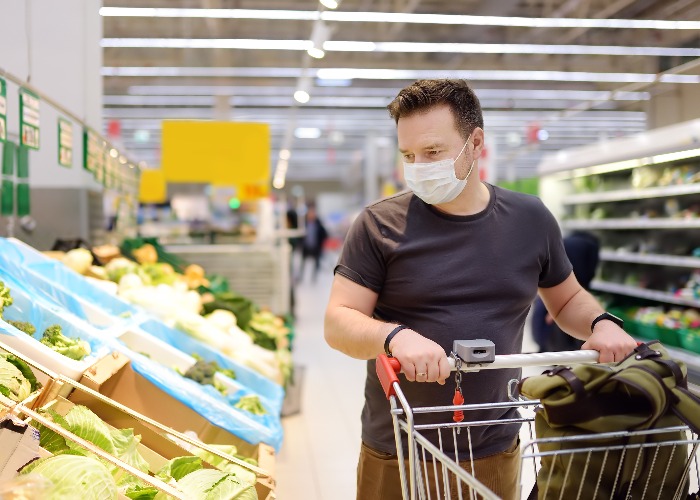Food price inflation: the food items with the biggest price rises

Our supermarket shops are getting more expensive, with far more price hikes than usual. Here are the items that are rising the fastest.
It’s no secret that there is something of a cost of living crisis on the way, with households facing all sorts of demands on their money in the months ahead, from rocketing energy bills to higher taxes.
One of the big areas of concern is the amount we will have to pay at the supermarket checkout, with food prices already rising seemingly across the board.
The food items getting more costly
So which items are becoming more pricey? A new study by research firm Assosia has dug into this issue, to highlight not only the foodstuffs that are rising in price, but also highlight just how those prices are changing.
It looked at the average prices charged for items, both branded and non-branded, at big supermarket names like Tesco, Sainsbury's, Asda, Morrisons and Waitrose.
And it found that for a basket of common goods, households are paying 6% more today than they were a year ago.
Here are some of those items that many of us are buying, the price you’re likely to pay right now, and how that has moved over the last 12 months.
|
Product |
Price |
Annual rise |
|
Stork Baking Spread |
£1.50 |
32% |
|
Lurpak Lighter Blended Butter |
£3.66 |
22% |
|
Heinz Baked Beans |
£1 |
18% |
|
Beef mince (5% fat) |
£4.41 |
12% |
|
Frozen garden peas |
96p |
12% |
|
Jordans Country Crisp cereal |
£2.58 |
12% |
|
Milk chocolate digestives |
59p |
11% |
|
Whole milk (two pints) |
89p |
9% |
|
Long-life skimmed milk (1l) |
84p |
9% |
|
Free-range medium eggs (6) |
£1 |
8% |
|
Ripe and ready conference pears |
£1.94 |
8% |
As the researchers point out, for a household typically spending around £430 a month on groceries, it works out at an extra £25 a month.
What’s more, while these are the big individual examples, they are certainly not the only ones with prices increasing.
The researchers pointed out that looking at those five major supermarkets, it would typically see around 2,700 price rises in early January, yet this year that figure is nearing 4,400.
The message is pretty clear ‒ food prices across the board are on the up.
What’s driving food price increases?
So what’s behind these price rises? There’s no single answer here.
Instead, food retailers are facing a barrage of higher costs themselves. For example, they are having to shell out more on HGV drivers to get the stock in, given the massive shortages and the ongoing battle to recruit a sufficient team.
Worker shortages in supply chains are playing a role too ‒ as people are forced off work due to the pandemic, it impacts the supply of certain items, which then inevitably results in the price of the remaining ones going up.
Given the nature of the pandemic, it can be nigh on impossible to predict which area is going to be hit next, which is perhaps why we saw more gaps in the shelves in the run-up to Christmas than might usually be the case.
Certain foods are also seeing their prices driven up by the ongoing fuel crisis ‒ the manufacturers are having to spend more in producing the goods, and are therefore hiking the price.
And according to the industry, supermarkets simply aren’t in a position to absorb those higher prices, so are having to pass the additional costs onto shoppers like you and me.
What can you do about rising food prices?
While it’s true that supermarkets seemingly across the board have increased prices, it’s also important to remember that there can be a real chasm in the price you pay for similar items depending on where you shop.
The monthly tracker issued by Which? is a useful tool on this front, as it monitors a standard basket of items each month and compares what they cost across the big and small supermarket names.
Its most recent study covered November 2021, and meant that over the month it checked the prices of 23 items ‒ from own-brand things like eggs and milk to branded items included Warburtons bread ‒ to see how the supermarkets compared.
It found that Aldi and Lidl are the kindest on the bank balance, with the basket of goods coming to £24.64 and £25.51 respectively.
That’s notably cheaper than the likes of Tesco (£28.87) and Sainsbury’s (£29.62) let alone the £34.79 you’d pay if you head to Waitrose.
You might also want to make use of a supermarket comparison tool to help you identify the stores delivering the best value on the items you want.
Trolley.co.uk is a good example, serving as something of a replacement for the old MySupermarket website, allowing you to compare the prices of 130,000 items across both big names and those discount outlets like Home Bargains and Savers too.
Comments
Be the first to comment
Do you want to comment on this article? You need to be signed in for this feature